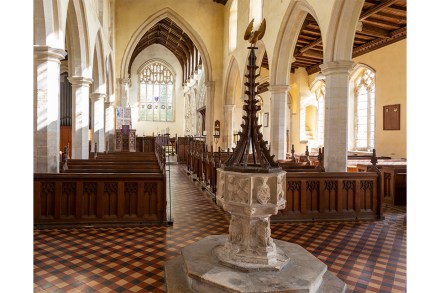All human life – and death – is here: the British parish church
In ‘Church Going’, the poem that gives this charming book its title, Philip Larkin talks about ‘one of the crew that tap and jot and know what rood-lofts were… Some ruin-bibber, randy for antique’. Well, Andrew Ziminski is king of the ruin-bibbers, randy for antique churches. He doesn’t just know what a rood-loft is; he’s also repaired loads of them. For 35 years, he has been a church conservator. In his first book, The Stonemason, he brilliantly explained his job. In this sequel, he takes us all round the church, from gravestones to altar cloths, and explains every conceivable aspect of the great parish church. Guides like this have been



